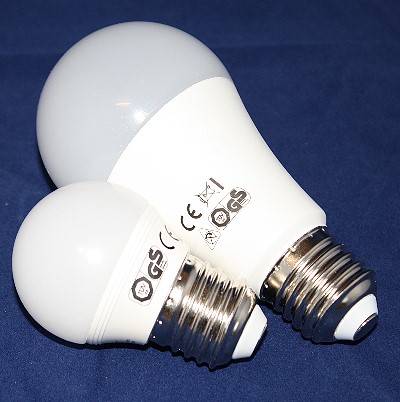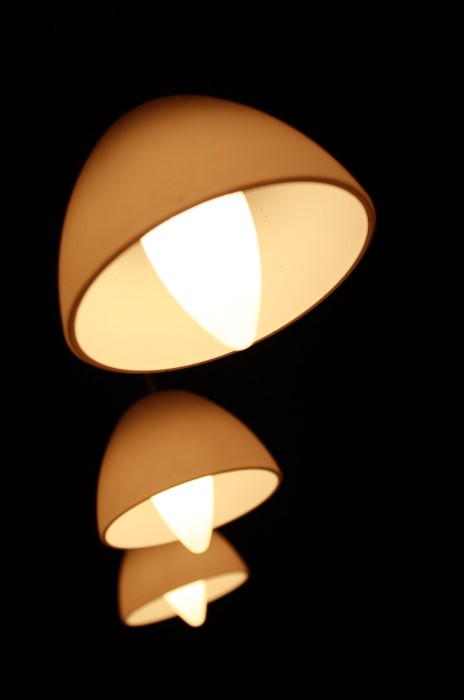Converter luminosity lumens to watts power - Calculate Now
With the help of this conversion, you convert the luminosity into watts and thus compare energy-saving lamp and conventional light bulb.
Basics of light and lighting technology
Light and lighting technology is a very complex subject that can hardly be covered in a few words. For example, the terms light and heat are inseparably linked. When a lamp is switched on, it draws current to produce light. In many lamps, the emission of light creates heat, which is emitted to the outside. This effect is not desirable, as valuable energy is given off as heat to the room instead of being used exclusively for light generation. With modern LED light sources, this is precisely not the case, which means that massive savings can be realized in electricity costs.
However, there are also applications where light and heat are equally in demand. In light therapy for health problems, for example, this is precisely the case. Here, the basic mood is to be improved by light, for example, while the heat provides a pleasant climate.
Direct and indirect lighting - this is important
 Light also provides comfort, especially when an entire lighting concept is set up for the home. Here, direct and indirect lighting are often combined. Some lamps and luminaires can also provide both in one, such as the suspended ceiling lights or floor lamps.
Light also provides comfort, especially when an entire lighting concept is set up for the home. Here, direct and indirect lighting are often combined. Some lamps and luminaires can also provide both in one, such as the suspended ceiling lights or floor lamps.
Indirect lighting, which makes up the majority of the light emitted by a lamp, is the amount of light that is directed to the ceiling or walls. On the other hand, the additional light that is directed directly downwards is called direct lighting.
The most important technical terms around light and lighting technology
You should also familiarize yourself with the most important technical terms related to lighting technology, such as
- Light color,
- light cone,
- cone of illumination and
- light transmission.
Light color for well-being
Light color is one of the most important characteristics of lighting sources. Basically, there are three light colors, whose color temperature is expressed in Kelvin:
- Warm white light < 3,300 Kelvin
- Neutral white light = 3,300 to 5,300 Kelvin
- Daylight white light > 5,300 Kelvin
Warm white light is perceived by people as comfortable and cozy and is ideal for living rooms. Neutral white light spreads a businesslike mood and is suitable for work areas. Daylight white light is rarely used indoors, and is only suitable for illuminance levels of 1,000 lux and above. The color rendering properties of a lamp also play an important role. Different attachments, which can be used to filter, direct and color the light, can change the color rendering property despite the same light color.
Light and illumination cones
Furthermore, light and illumination cones are important within the lighting concept. The light cone should be positioned so that it is perceived as a ground. If light cones are placed in such a way that they interfere with the geometry of the image area, they will be perceived as disturbing. The lighting cone is basically used to achieve the same goal, so that a specific area can be illuminated.
The light transmission
Light transmission is also crucial. With lamps and luminaires, it depends on the shades and how they are designed. They generally allow only a portion of the light to pass through, creating a more pleasant light overall.
Differences between bulbs, lamps and luminaires
There are also big differences between bulbs, lamps and luminaires. But what exactly is what?
|
Lamp |
Luminaire |
|
Is a lighting fixture or illuminant (bulb) |
Is a lighting object |
|
Metal and/or ceramic socket |
Has a receptacle for illuminants (bulbs) or contains a permanently installed illuminant (e.g. LED luminaire) |
|
Socket provides electrical and mechanical connection to the luminaire |
Examples of lamps are accordingly
- Fluorescent tubes,
- incandescent bulbs,
- halogen lamps, etc.
Examples of luminaires, on the other hand, are
- Wall lights,
- ceiling lights,
- desk lamps,
- floor lamps, etc.
Calculation examples for lamps
Accordingly, lamps in particular have many important technical quantities. One of them is the luminous flux, which is specified in lumens. It is higher, the brighter the lamp shines. Illuminance is also an important factor. Basically, the following applies - a distant light source appears darker than a nearby one. To obtain comparable values, the illuminance should therefore always be related to an area. By the way, it is given in lux. This lux ratio indicates how much light arrives at a certain area, i.e. the ratio between luminous flux and area. It is calculated as follows:
Illuminance (E) = luminous flux (lm) / area (m²).
The luminous flux values are very different. They usually look as follows:
- 1,500 lm - energy-saving lamp with 30 W
- 1.380 lm - incandescent bulb with 100 W
So what is the illuminance of the above lamps on an area of, for example, 15 square meters?
Energy saving lamp
1.500 lm / 15 m² = 100 lx
Incandescent bulb
1,380 lm / 15 m² = 92 lx
Comparison values for illuminance
To identify the appropriate illuminance, you can take an example from nature:
- 0.2 lx at full moon
- 1,000 - 2,000 lx with an overcast winter sky
- 100.000 lx at bright sunshine in summer
For the premises it looks already completely different. For example, in offices, where people need to concentrate, illuminance levels of 750 lx should be realized. For corridor lighting, on the other hand, 100 lx is quite sufficient.
Calculating brightness - luminance
Luminance indicates the amount of visible light emitted from a given surface in a given direction. The surface refers to the area of the light source. An example illustrates this - a two-meter fluorescent tube appears more glaring to people than an incandescent bulb with the same luminous intensity. Therefore the luminance is decisive, which is indicated with L. It is calculated as follows:
Luminance (L) = Luminosity of the light source (IV) / Area of the light source (A).
Topics: building & Living & Household & Electrical & Energy Saving & Lighting



